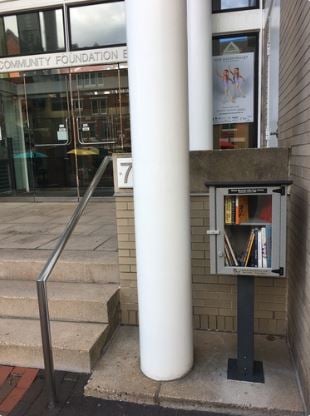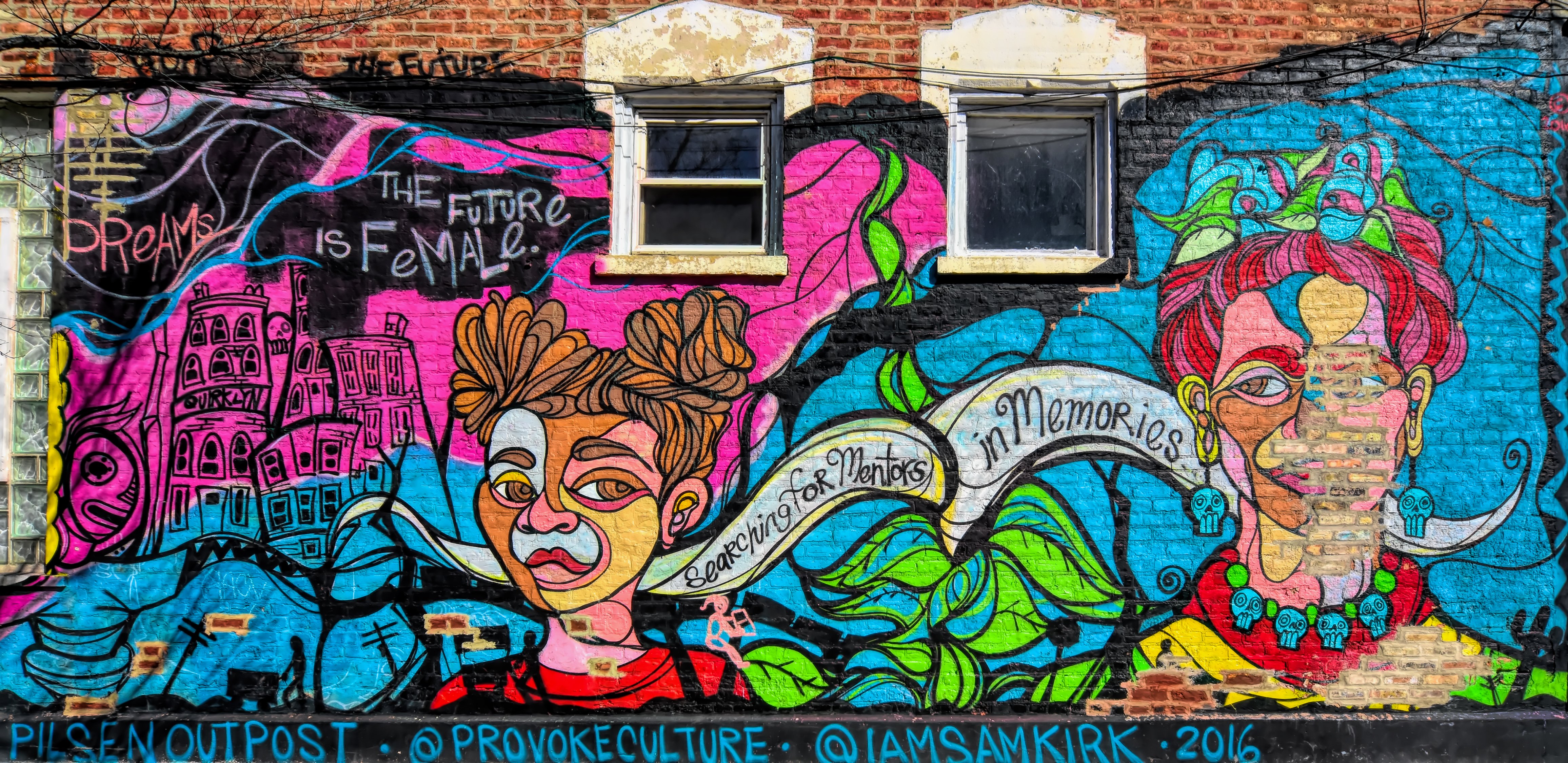By: Laura Meade
On my walk to our office in the morning, I often stop by the Little Free Library in front of The Community Foundation for Greater New Haven. It’s chronically empty- my donations often disappear, never to be replaced by new books. When I first started visiting this location, I was disappointed by this phenomenon.
I can’t stop donating to this one, though, and, in light of some research I’ve been doing recently for National Library Lover’s Month, I think I am starting to understand why. This is either one of the most popular or unpopular Little Libraries I’ve ever encountered. Are books not staying on the shelves for more than 24 hours because there is such a high demand for my family’s consumed literature in that location, or is there something else going on? Who is only taking and not leaving?
 First, a short love letter to the Little Free Library. The organization was established in 2009 with one small library; in 2022 there were more than 150,000 Little Free Libraries in more than 115 countries worldwide. This idea is incredibly important for several reasons:
First, a short love letter to the Little Free Library. The organization was established in 2009 with one small library; in 2022 there were more than 150,000 Little Free Libraries in more than 115 countries worldwide. This idea is incredibly important for several reasons:
- Encouraging literacy and a love of reading. Little Libraries promote literacy and a love of reading by making books accessible to everyone in the community. They provide a free and convenient way for people to access books and develop a lifelong love of reading.
- Building community. Little Libraries can serve as community gathering places, encouraging neighbors to come together and connect over their shared love of books. They also foster a sense of community ownership and responsibility, as members of the community are often involved in maintaining and stocking the library.
- Encouraging neighborhood beautification. Little Libraries contribute to neighborhood beautification by serving as visually appealing and well-maintained structures in public spaces.
- Promoting sustainability. By encouraging the sharing of books and reducing the need for people to buy new books, Little Libraries promote sustainability and reduce waste.
- Improving access to books. In communities where access to books and libraries may be limited, Little Libraries can provide an important source of reading materials and support literacy and education.
They offer a simple and effective way to bring books and reading into the lives of people in communities across the world.
What About "Big" Libraries?
Libraries are democratic spaces that provide access to information, education, and culture for everyone, regardless of their background or financial status. To fulfill this mission, they must be designed and managed in a way that promotes equity and inclusion.
Space is often considered a neutral, inanimate background to life. However it's important to recognize that our spaces carry the ideology and power structure of their designers and greater context. Buildings let us know what we are allowed to do and where we are allowed to go. Those of us who move freely through a space experience it as neutral, and we take it for granted how natural our environment feels. In contrast, people who do not move freely through a space may internalize a sense of being out of place. A sense of inadequacy haunts other users who internalize an otherness that comes from occupying a space not meant for them.
For this reason, the architecture of public libraries plays a truly crucial role in providing equitable and democratic spaces. By carefully considering public libraries, especially during and after the COVID-19 pandemic, city planners and designers are working to create and maintain welcoming, inclusive environments that support equal access to information and resources.
Here are some key design elements that contribute to the democratic and equitable public library spaces found in a lot of American cities:
- Accessibility is crucial for ensuring that all members of the community have equal access to library resources and services. This includes features like ramps, elevators, and accessible technology, as well as ensuring that spaces are well-lit and easy to navigate.
- Flexibility. Public libraries are full of spaces that can be adapted for a variety of uses, such as reading rooms, computer labs, meeting rooms, and exhibit spaces, to ensure that the library is responsive to the changing needs of the community.
- Community Spaces. Dedicated community spaces, such as meeting rooms, exhibit spaces, and reading rooms, foster a sense of community and provide opportunities for social interaction and exchange.
- Cultural Representation. Design elements that reflect the cultural diversity of the community, such as murals, art installations, and cultural symbols, create a welcoming and inclusive environment that is representative of the community it serves.
In low-income communities, libraries can play a crucial role in addressing disparities and providing access to resources that can help to improve educational outcomes, support economic mobility, and build strong communities. By offering access to information and technology, educational resources, and community-building opportunities, public libraries help level the playing field and support the growth and development of all citizens.
I'm going to continue donating my family’s books to the fledgling Little Library as I pass it on Audubon Street, regardless of the fact I rarely find anything new in there. Public libraries are one of the first places our city should invest to build the future we hope to see.
Let’s keep donating to the loneliest Little Libraries in our communities until we run out of books.






